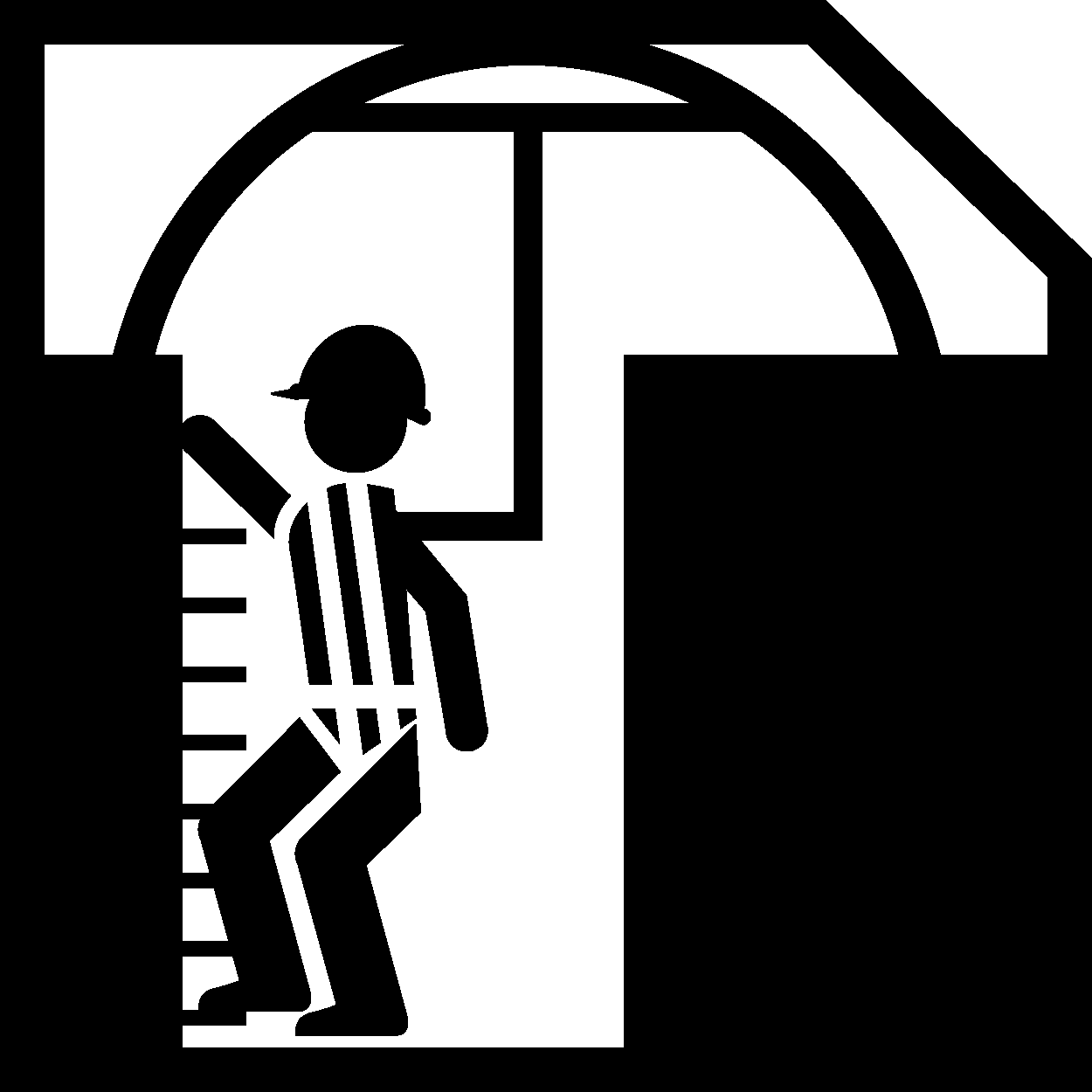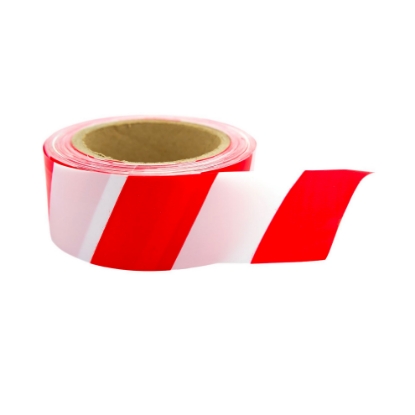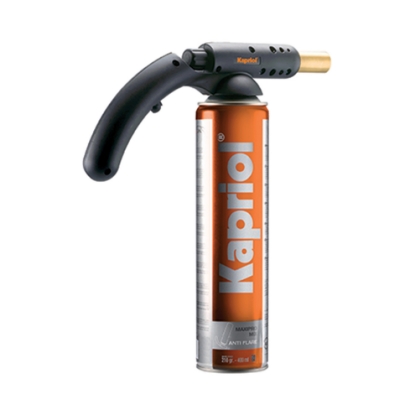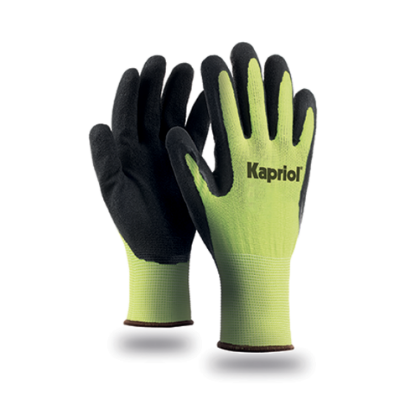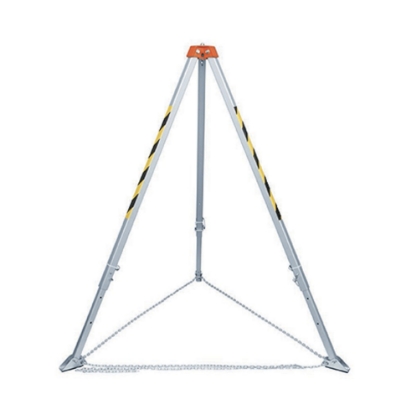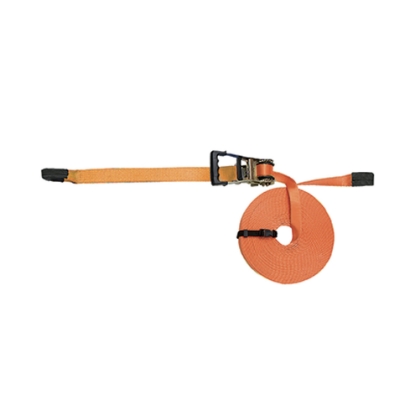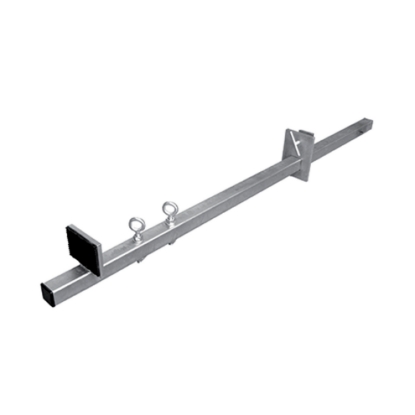| Art./Item | Pcs |
|---|---|
| 27960 | 1 |
Tripod recovery winch with galvanised steel rope and automatic locking brake, for use in combination with the safety tripod, for lifting and recovering the operator in difficult situations and confined spaces.
The manual tripod winch comes complete with pulley and tripod attachment system.
TECHNICAL SPECIFICATIONS
- 6.3 mm diameter galvanised rope
- Automatic locking brake
- Maximum working load: 140 kg
- Breaking load 18 kN
- Complete with pulley and tripod fixing system
- Standard EN 1496
MATERIAL
- Rope: galvanised steel
Rescue in confined spaces
Maintenance and storage of PPE
PPE periodic checks and inspections
1. Mount the tripod in position above the access to the confined workplace, eg manhole, preparing both the rescue lifting device and the fall arrester equipment.
2. Connect the operator to both the fall arrester connector and the rescue lifting device connector.
3. The operator goes down with a ladder securing himself to the retractable device. The rescue lifting device is used only for recovery in case of need.
4. Once the work is finished, recover the operator using the rescue lifting device. Thanks to the rescue lifting device it is possible to recover the operator even in an emergency, for example if he has a sudden indisposition due to problems of harmful exhalations.
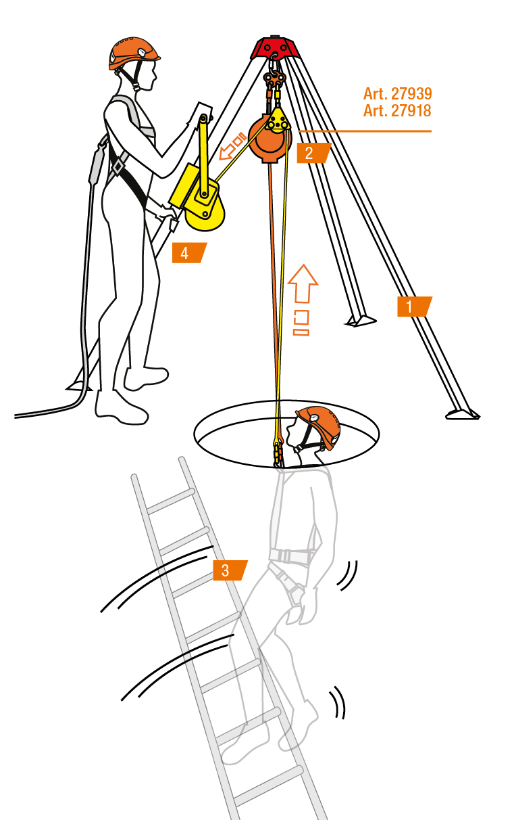
Correct and regular maintenance helps prevent premature ageing of PPE. For this reason, users are recommended to carefully respect all indications found in the user and maintenance manual that accompanies each PPE and to follow the simple storage and preservation rules:
- Keep away from sunlight and UV rays as these are the primary cause of ageing of PPE textile fibers
- Keep PPE away from direct heat sources as the synthetic textile fibers used to make harnesses, lanyards, and energy absorption systems have a very low melting temperature
- PPE must be stored in cool and dry areas, as humidity generates mold harmful to textile fibers and corrosive on metal parts
- A periodic cleaning operation is essential to ensure a good durability of the PPE
- A washing with lukewarm water eliminates surface dirt and that present inside the textile fibers
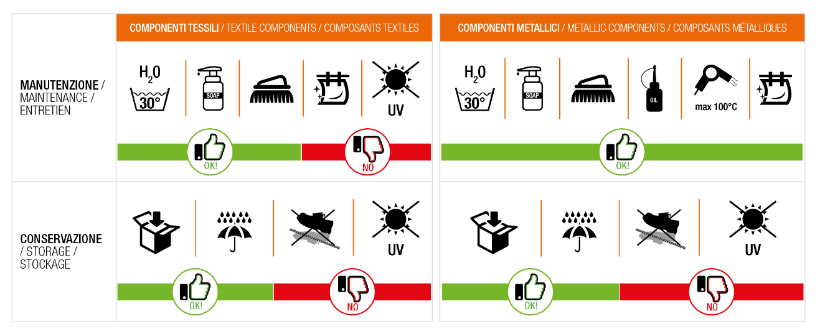
The current legislation requires that each equipment must be subjected to periodic inspections:
- Before, during and after use, the user must check the PPE conditions and integrity through a visual inspection after each use
- At least every 12 months, PPE must be subjected to mandatory periodic checks and inspections by competent personnel authorized by the manufacturing company
Each PPE is accompanied by a manual and identity card that must be kept for the entire use duration of the product and filled in with the periodic inspections data.
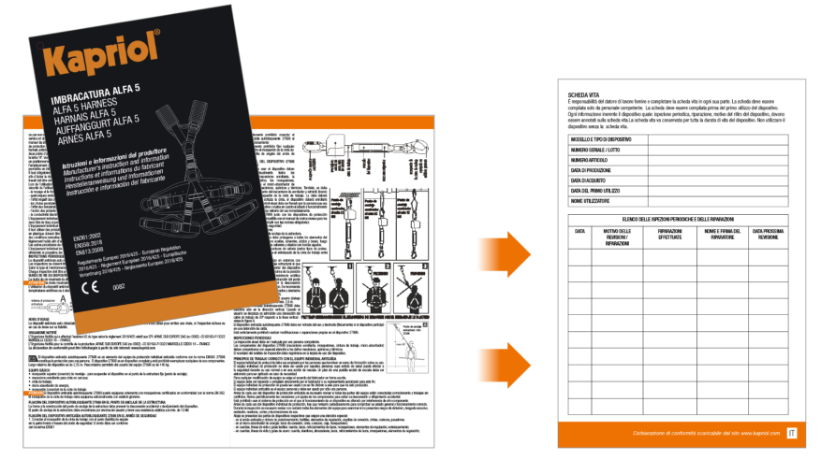
Recommended use
